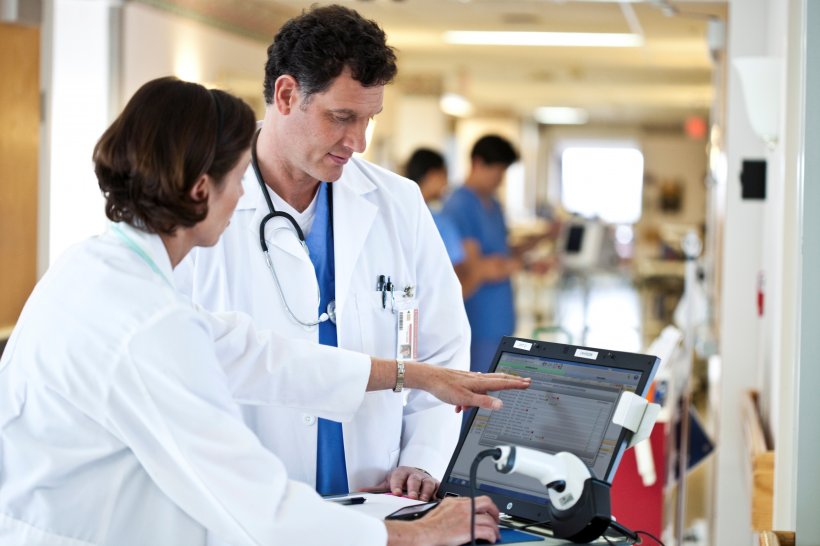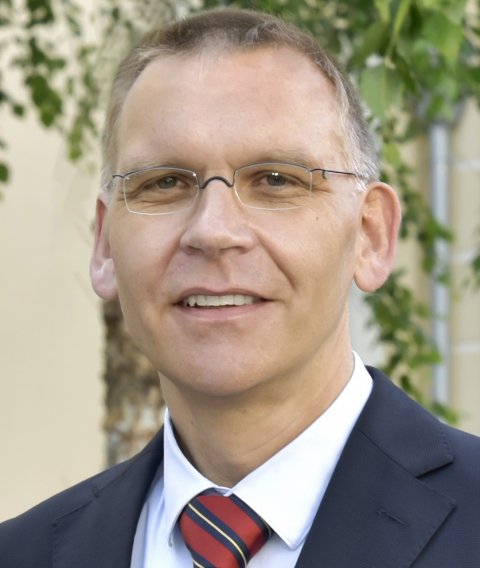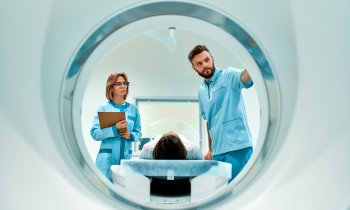
Article • Avoiding incidents
The digital early warning system
Staff shortages are among the most urgent healthcare problems. While digitisation might offer relief, unfortunately many hospitals lag behind in transforming their processes. As pressure mounts, the chorus is heard: ‘It’s high time for bold changes’.
Report: Beate Schenk

To recognise, or even better, avoid signs of a patient’s clinical instability despite tight staffing, Sana Klinikum Lichtenberg in Berlin introduced IT-supported Early Warning Scoring (EWS) to its abdominal surgery department. After successful completion of the pilot phase, EWS is now in regular operational mode. EWS is based on the vital signs: blood pressure, pulse/heart rate, body temperature, oxygenation and assessment of consciousness level. These parameters are regularly recorded by the nurses. When the score deviates, which might indicate a change in patient status the medical team are alerted via smartphone in a cascading alarm system, enabling immediate response.
Early warning, quick response
Wireless sensors can be set to individually configurable time intervals, which allows tighter and site-independent monitoring and control of the vital signs without putting an additional burden on the nurses. Early warning systems that alert the medical team to problems significantly improve the quality of care.
The vital signs of all patients in the 34-bed department of general and abdominal surgery are measured and recorded digitally twice a day. ‘The procedure takes about one minute per patient,’ said Ivonne Lemke, interim head of nursing. ‘The team records many more parameters than before,’ she added.
Recommended article

Interview • Drones or data cables?
Are humans too slow for digitalisation?
Today the impressive development of drones by some people is happily regarded as the pinnacle of digitalisation in healthcare. Some groups are testing whether drones can quickly and safely deliver defibrillators to patients in need or whether they can transport laboratory samples or blood products. These developments catch lots of attention, but PD Dr Dominik Pförringer, trauma and orthopaedic…
Digital cost reduction
With Smart Data, meaning the intelligent use of large data volumes, we can make real progress in anaesthesia and intensive medicine, in research as well as patient care, above all regarding early detection of patient risks.
Axel R Heller
The Clinic of Anaesthesiology and Surgical Intensive Medicine at University Hospital Augsburg also uses an IT-supported early warning system. Wireless measurement devices, mostly cuffs, record vital parameters at individually set intervals and continuously transmit values to a central monitor in the nurses’ station – entirely independent of a patient’s location – even if monitored in their home. Frequently, certain vital parameters start to deteriorate 48 hours before the actual clinical deterioration. Depending on the type of values recorded, and the given risk pattern, the physicians or an emergency team is automatically notified. Whenever the early warning system indicates deterioration of vital signs, the nurses monitor the patient more closely and can initiate measures proactively.

When the ward cannot provide a recommended treatment, the patient can be moved to the ICU. Unnecessary moves, on the other hand, can be avoided – which reduces costs. ‘Per one thousand patients we see a significant decrease in emergency calls and circulatory arrests. Thanks to clearly defined early warning criteria the absolute number of necessary reanimations is on a low level – despite increasing severity and increasing number of patients,’ explained Professor Axel R Heller, Director of the Clinic of Anaesthesiology and Surgical Intensive Medicine at University Hospital Augsburg.
Heller plans to use digital measurements systems more often in research: ‘With Smart Data, meaning the intelligent use of large data volumes, we can make real progress in anaesthesia and intensive medicine, in research as well as patient care, above all regarding early detection of patient risks.’
Profile:
Professor Axel R Heller is Director of the Department of Anaesthesiology and Intensive Care Medicine at the University Hospital Augsburg. Previously, he chaired the Department of Emergency Medicine at the Technical University Dresden. He is an expert on the practical implementation of clinical research, including digital solutions for anaesthesiology and the ICU.
Professor Bernd W Böttiger is Director of the Department of Anaesthesiology and Intensive Care Medicine at the University of Cologne. His work focuses on emergency medicine and promoting knowledge of resuscitation basics among the general public. He is also Director of Science and Research at the European Resuscitation Council (ERC), CEO of the German Resuscitation Council (GRC) and a board member of the German Interdisciplinary Association for Intensive and Emergency Medicine (DIVI).
14.06.2019









